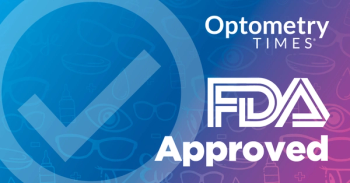
- May digital edition 2022
- Volume 14
- Issue 5
2022 updates to ADA standards of care for patients with diabetes
The ADA now recommends an individualized approach at diagnosis of diabetes as well as for adults who do not have symptoms to be screened at age 35 years.
The American Diabetes Association (ADA) recently released its Standards of Medical Care in Diabetes—2022 to reflect a number of important updates and clinical guidance for screening, treating, and using newer technologies in the management of patients with diabetes, including those with vascular complications like cardiovascular, renal, and retinal disease.1
Optometrists should be aware of these new recommendations to help counsel, manage, and appropriately refer affected patients, both those with and without diabetic retinopathy (DR) and other ocular sequelae of diabetes.
Here, I’ll highlight a few of the more substantive changes to the ADA’s Standards of Medical Care in Diabetes, which, notably, have been endorsed for the fourth year in a row by the American College of Cardiology.
Screening age lowered
The first important change lowered the screening age for prediabetes from age 45 years to age 35 years. Prediabetes affected 88 million Americans in 2017,2 and rates have almost certainly increased since then.
Three methods of diagnosis are accepted: fasting blood glucose, 2-hour post challenge oral glucose tolerance test (OGTT) and glycated hemoglobin A1c (HbA1c). OGTT appears to diagnose prediabetes and type 2 diabetes (T2D) more often than other assays (see Figure 1).3
Moreover, as many as 90% of patients with prediabetes are unaware of the condition. Prediabetes engenders multiple risks for cardiovascular disease vis-á-vis its strong association with visceral obesity, hypertension, dyslipidemia, and hyperglycemia.
Interestingly, studies show a prevalence of DR in those with prediabetes ranging from 4% to 12%.4-6
Related:
ADA guidelines note that prediabetes “should not be viewed as a clinical entity in its own right, but rather as a risk factor for progression to diabetes and cardiovascular disease.”
Figure 2 depicts a person with prediabetes and mild, nonproliferative DR seen in my office.
Therapies recommended
A second important change to the 2022 ADA guidelines is a multifaceted recommendation for initiation of glucose-lowering therapies in addition to metformin at diagnosis of T2D.7
Specifically, both sodium-glucose cotransporter 2 inhibitors (SGLT2is) and glucagon-like peptide 1 receptor agonists (GLP-1 RAs) are most appropriate for patients with preexisting cardiovascular disease at diagnosis because these agents have been demonstrated to lower major adverse cardiovascular events such as stroke, heart attack, and cardiovascular death in such populations.
Related:
SGLT2i agents such as empagliflozin (Jardiance), dapagliflozin (Farxiga), and canagliflozin (Invokana) improve kidney function in those with mild to moderate diabetic kidney disease and have been shown to be particularly useful in reducing risk of hospitalization for heart failure (both with and without preserved ejection fraction) in patients with and without diabetes.8
Additionally, dapagliflozin received breakthrough therapy classification from the FDA in 2020 for management of chronic kidney disease in patients with and without diabetes.9
The new guidelines also recommend these therapies when patients are intolerant to metformin (primarily due to gastrointestinal distress/diarrhea) and to GLP-1 RAs (eg, liraglutide [Victoza], semaglutide [Ozempic; Rybelsus], and dulaglutide [Trulicity]) as add-on therapy to achieve individualized glucose targets for patients with T2D already using insulin (rather than increasing insulin dosage, which—importantly for us—appears to increase the risk of proliferative DR).10
For reducing renal and cardiovascular risk even more, the new guidelines also suggest that providers consider both SGLT2i and GLP-1 RA agents in tandem for select patients, but cost/coverage of dual therapy will almost certainly be problematic.
Related:
Although not approved for treating diabetes per se, high-dose semaglutide (2.4 mg weekly injection, Wegovy™, NovoNordisk) recently was approved in the US for weight loss in those with a body mass index equal to or greater than 30 kg/m2 or equal to or greater than 27 kg/m2 with comorbidities like T2D and hypertension.
In a pivotal clinical trial, mean weight loss at 1 year was an extraordinary 33 lb.11 Although ADA advocates for use in appropriate patients (contraindicated in pregnancy or those trying to conceive),12 the drug is expensive ($1500 for 4 weekly injections, a 28-day supply), and both endocrinologists and patients have told me that Medicare and private insurers are largely denying coverage at this time.
Continuous monitoring
ADA guidelines now recommend continuous glucose monitoring (CGM) systems for not only patients with type 1 diabetes or T2D using rapid-acting insulin, but also for patients with T2D using long-acting background (basal) insulins such as insulin glargine injection (Lantus; Basaglar; Toujeo) insulin degludec injection (Tresiba), as well as neutral protamine Hagedorn insulin.13
Multiple studies have demonstrated improved glucose control and less hypoglycemia in patients on exogenous insulin therapy who use CGM; this change should substantially assist many patients with T2D to improve their glucose metrics (HbA1c, glucose time in range [TIR], time above range, time below range, severe hypoglycemia requiring assistance/emergency medical technician services) and reduce their odds of developing DR.
Related:
Remember, a 10% increase in glucose TIR between 70 and 180 mg/dL, 2.4 hours per day, reduces the risk of DR incidence and progression by approximately 40%.
The updated guidelines state that 14-day TIR may be most useful for directing changes in the diabetes treatment regimen.
Most patients using CGM tell me it is the single most important technology helping to manage their own diabetes.
The 2022 ADA guidelines have a dedicated chapter on retinopathy, neuropathy, and foot care14 and reiterate the benefits of anti-VEGF therapy (AVT) for center-involved diabetic macular edema (CI-DME) and efficacy equivalent to panretinal laser for proliferative DR.15
Makes perfect sense: Anti-VEGF is equally effective for treating PDR, as is PRP. However, they do not yet advocate for use of these agents in nonproliferative DR in isolation.
The stated rationale for this exclusion is the finding from Diabetic Retinopathy Clinical Research Network Protocol W that anti-VEGF therapy for moderate to severe nonproliferative DR did not result in better visual acuity at 2 years than did observation in subjects who were closely followed for development of proliferative DR or CI-DME and subsequently treated.
Related:
I think this will remain a topic of considerable debate in the diabetes and retina communities, particularly because we often find patients in real-world settings fare worse than their counterparts in randomized clinical trials.
Moreover, and directly to the point, pooled analysis of data from the RISE/RIDE and PANORAMA trials suggested that sustained, severe vision loss (20/200 or worse) in patients with severe nonproliferative DR would be reduced by more than 50% if AVT were used more widely in the real world.16
Only time, more analysis, and patient/practitioner advocacy will tell whether clinical practice guidelines from the ADA or any other organization will bend this arc.
References
1. American Diabetes Association. Introduction: Standards of Medical Care in Diabetes—2022. Diabetes Care. 1 2022;45(suppl 1):S1-S2. doi:10.2337/dc22-Sint
2. American Diabetes Association Professional Practice Committee; American Diabetes Association Professional Practice Committee; Draznin B, Aroda VR, Bakris G, et al. 2. classification and diagnosis of diabetes: Standards of Medical Care in Diabetes—2022. Diabetes Care. 2022;45(suppl 1):S17-S38. doi:10.2337/dc22-S002
3. Jagannathan R, Neves JS, Dorcely B, et al. The oral glucose tolerance test: 100 years later. Diabetes Metab Syndr Obes. 2020;13:3787-3805. doi.org/10.2147/DMSO.S246062
4. Gabriel R, Boukichou Abdelkader N, Acosta T, et al; e-PREDICE Consortium. Early prevention of diabetes microvascular complications in people with hyperglycaemia in Europe. ePREDICE randomized trial. study protocol, recruitment and selected baseline data. PLoS One. 2020;15(4):e0231196. doi:10.1371/journal.pone.0231196
5. Lamparter J, Raum P, Pfeiffer N, et al. Prevalence and associations of diabetic retinopathy in a large cohort of prediabetic subjects: the Gutenberg Health Study. J Diabetes Complications. 2014;28(4):482-487. doi:10.1016/j.jdiacomp.2014.02.008
6. Emanuelsson F, Marott S, Tybjærg-Hansen A, Nordestgaard BG, Benn M. Impact of glucose level on micro- and macrovascular disease in the general population: a Mendelian randomization study. Diabetes Care. 2020;43(4):894-902. doi:10.2337/dc19-1850
7. American Diabetes Association Professional Practice Committee; American Diabetes Association Professional Practice Committee; Draznin B, Aroda VR, Bakris G, et al. 10. cardiovascular disease and risk management: Standards of Medical Care in Diabetes—2022. Diabetes Care. 2022;45(suppl 1):S144-S174.
8. Rabizadeh S, Nakhjavani M, Esteghamati A. Cardiovascular and renal benefits of SGLT2 Inhibitors: a narrative review. Int J Endocrinol Metab. 2019;17(2):e84353. doi: 10.5812/ijem.84353
9. FDA approves treatment for chronic kidney disease. April 30, 2021. Accessed April 6, 2022. https://www.fda.gov/news-events/press-announcements/fda-approves-treatment-chronic-kidney-disease
10. Gange WS, Lopez J, Xu BY, Lung K, Seabury SA, Toy BC. Incidence of proliferative diabetic retinopathy and other neovascular sequelae at 5 years following diagnosis of type 2 diabetes. Diabetes Care. 2021;44(11):2518-2526. doi:10.2337/dc21-0228
11. Khoo TK, Lin J. Once-weekly semaglutide in adults with overweight or obesity. N Engl J Med. 2021;385(1):e4. doi: 10.1056/NEJMc2106918
12. Sun JK, Glassman AR, Beaulieu WT, et al. Ophthalmology. 2019;126(1). 87-95. doi: 10.1016/j.ophtha.2018.08.001.
13. American Diabetes Association Professional Practice Committee; American Diabetes Association Professional Practice Committee; Draznin B, Aroda VR, Bakris G, et al. 8. obesity and weight management for the prevention and treatment of type 2 diabetes: Standards of Medical Care in Diabetes—2022. Diabetes Care. 2022;45(suppl 1):S113-S124. doi:10.2337/dc22-S008
14. American Diabetes Association Professional Practice Committee; American Diabetes Association Professional Practice Committee; Draznin B, Aroda VR, Bakris G, et al. 6. glycemic targets: Standards of Medical Care in Diabetes—2022. Diabetes Care. 2022;45(suppl 1):S83-S96. doi:10.2337/dc22-S006
15. American Diabetes Association Professional Practice Committee; American Diabetes Association Professional Practice Committee; Draznin B, Aroda VR, Bakris G, et al. 12. retinopathy, neuropathy, and foot care: Standards of Medical Care in Diabetes—2022. Diabetes Care. 2022;45(suppl 1):S185-S194. doi:10.2337/dc22-S012
16. Lim J. Long-term clinical impact of intravitreal anti-VEGF therapy for severe non-proliferative diabetic retinopathy (NPDR): analyses through a discrete event simulation model. Paper presented at: Association for Research in Vision and Ophthalmology; May 1-7, 2021; virtual. Accessed June 1, 2021. https://www.arvo.org/globalassets/annual-meeting/arvo-2021/arvo-2021-abstracts.pdf
Articles in this issue
over 3 years ago
Water biology plays important role in healthover 3 years ago
Phakic IOL implantation: Visual and refractive outcomesover 3 years ago
Compounded medications in ophthalmic patient careover 3 years ago
Expecting the unexpected in ocular casesover 3 years ago
What’s hot (and not) in retinal newsover 3 years ago
Navigating vision challenges in aviationover 3 years ago
Combatting dry eye during contact lens wearover 3 years ago
Glaucoma: More pressures than meet the eyeNewsletter
Want more insights like this? Subscribe to Optometry Times and get clinical pearls and practice tips delivered straight to your inbox.


















































.png)


